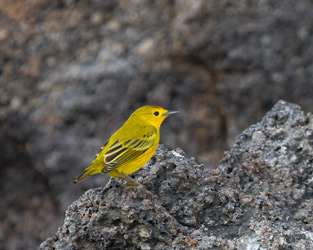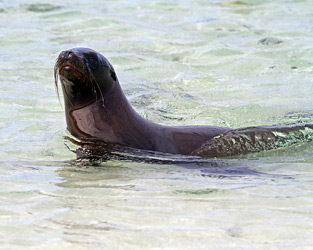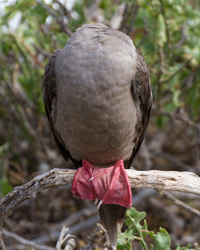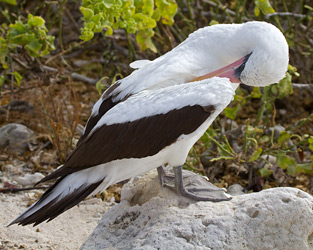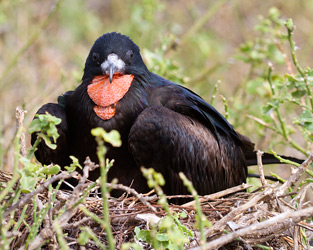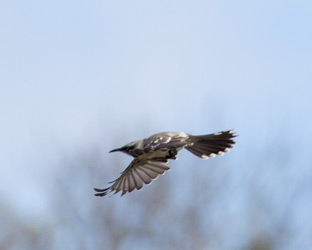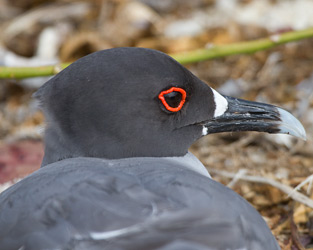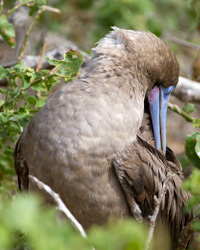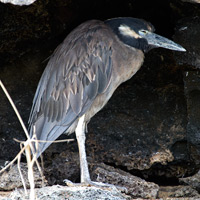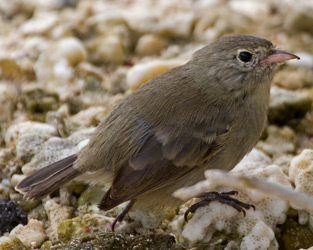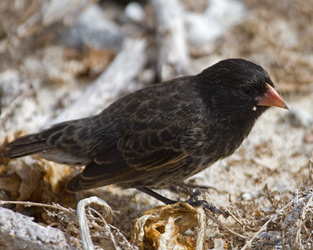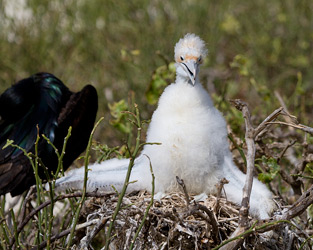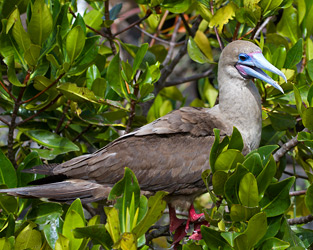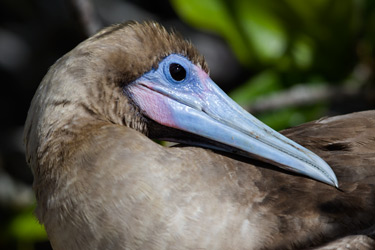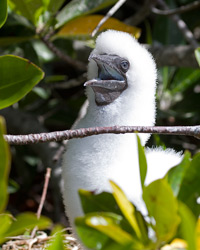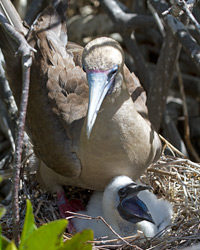Galápagos
Saturday, July 23, 2011: I went on deck around 6am to look for seabirds. We were still enroute to Genovesa (Tower) Island. Before reaching Genovesa, I had added Red-footed Booby to my Galápagos list.
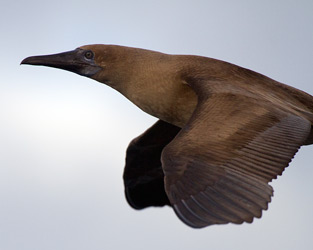 |
| Red-footed Booby |
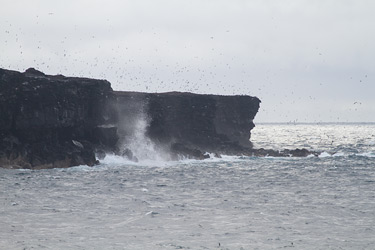 |
| Genovesa: Seabirds and Cliffs |
We entered Darwin Bay, an ancient caldera that is partially open to the sea. After breakfast, we made a wet landing on the beach. The local form of “Galapagos” Mockingbird quickly put in an appearance. We would see quite a few of these. A Gray Warbler-Finch replaced a Yellow Warbler on a seaside rock, another bird I would see more of. We walked along the beach looking mainly at nesting birds — frigatebirds, boobies, gulls. Before long, I'd seen several of the warbler-finches, a Large Cactus Finch, and a few of the local Sharp-beaked Ground-Finches. We later got a good comparison between side-by-side Large Cactus-Finch and Large Ground-Finch.
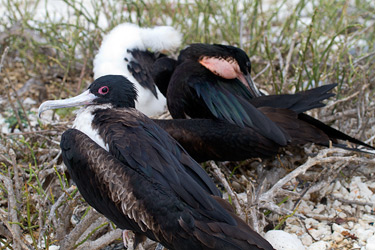 |
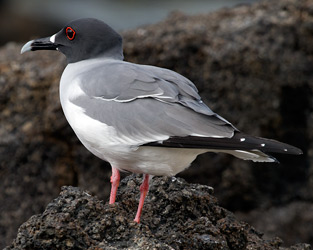 |
| Magnificent Frigatebird Family | Genovesa: Seabirds and Cliffs |
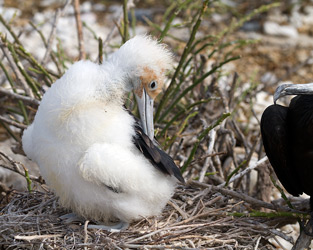 |
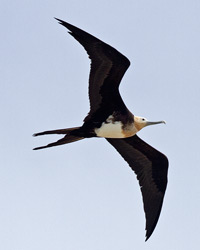 |
| Great Frigatebird Chick | Great Frigatebird |
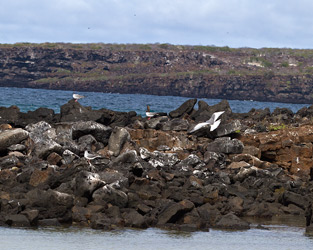 |
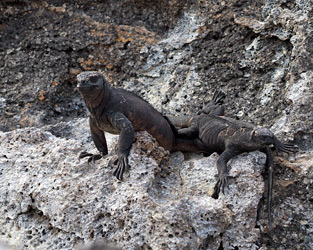 |
| Swallow-tailed Gulls | Marine Iguanas |
We continued to see more of the same while some of the group snorkeled. This allowed me to get a better feel for these birds. Finally, it was time to return to the boat. They had a special Ecudadorian-themed lunch for us. Lunch came to an abrupt end when someone sighted a whale. Unfortunately, it did not resurface in the bay, so only two people saw it (not me).
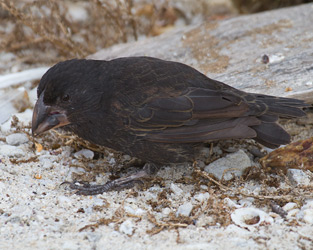 |
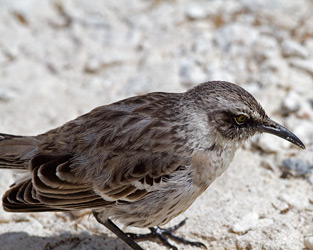 |
| Large Ground-Finch | Galapagos Mockingbird |
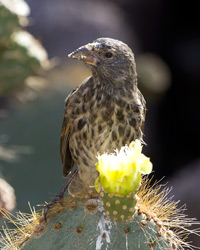 |
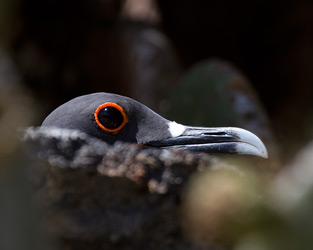 |
| Large Cactus-Finch | Swallow-tailed Gull |
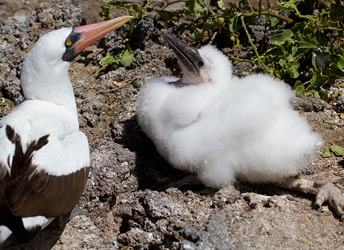 |
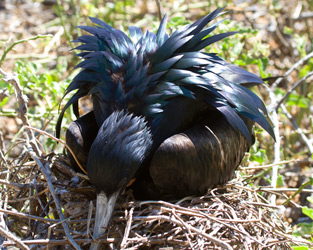 |
| Red-footed Booby with Chick | Great Frigatebird |
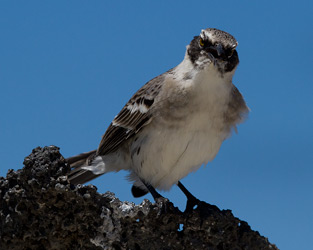 |
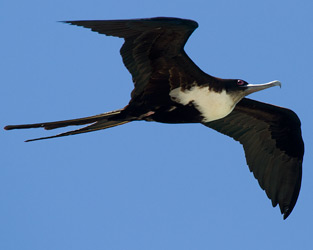 |
| Galapagos Mockingbird | Great Frigatebird |
We went out in pangas in mid-afternoon. A short cruise along the cliffs of the caldera revealed a number of nesting birds, including Red-billed Tropicbirds. We also found some Galapagos Fur Seals. They aren't really seals. They are a type of sea lion. Oddly, the two types of sea lion in the Galápagos are not closely related. The Galapagos Sea Lion derives from the California Sea Lion, while the Galapagos Fur Seal is descended from the Subantarctic Fur Seal.
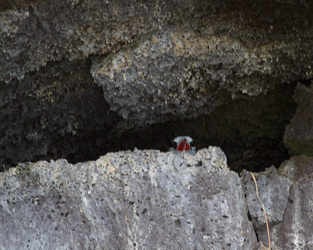 |
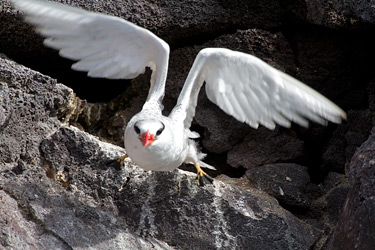 |
| Red-billed Tropicbird | |
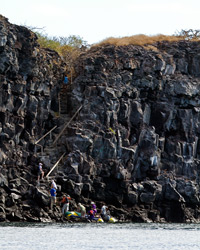 |
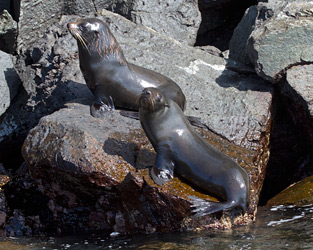 |
| Prince Phillip's Steps | Galapagos Fur Seals |
We then climbed Prince Phillip's Steps to the top of the caldera. I think it was only about 60 feet to the top. The vegetation on top can't hide the volcanic origin of the island. We spent much of the time walking on frozen lava. The island also appears to be falling apart. There are numerous fissures in the rock, and I expect those are being further eroded every year.
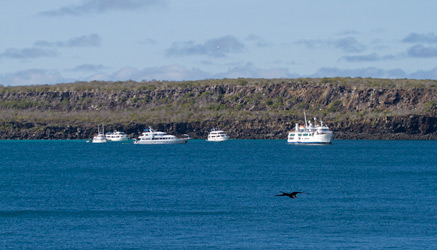 |
| Genovesa Visitors |
We walked through booby nesting areas to a more open area where a large number of Wedge-rumped Storm-Petrels and other seabirds were flying about. The storm-petrels nest in little crevices in the rock. There is also a predator here, an owl. We started searching for the owl. Eventually, we found 3 or 4 Short-eared Owls. A couple of them briefly flew around together, but mostly they sat on the ground looking like a piece of congealed lava.
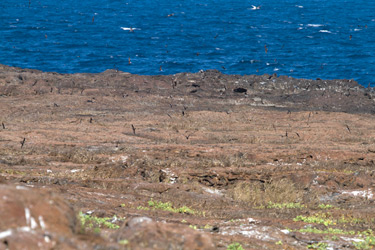 |
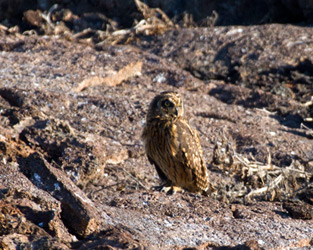 |
| Storm-Petrels over Land | Short-eared Owl |
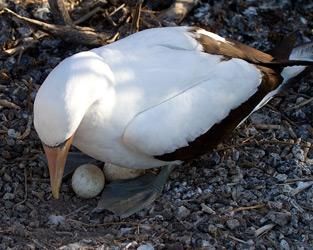 |
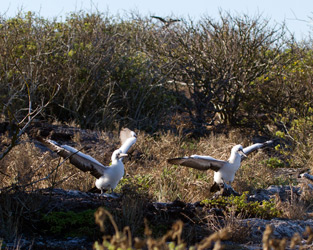 |
| Nazca Booby with Eggs | Wing Excercise |
After observing the show for a while, we returned along the same path, went down the steps, and called for our pangas. We began our navigation to Isabela Island soon after all were back on board.
After dinner, I went out briefly to look at the stars. For once, there were no clouds and I had a nice view of the Milky Way from the Northern Cross to the Southern Cross. Then I went to bed. I have to be out at dawn to look for seabirds and whales. The Swallow-tailed Gulls were also out flying around the boat.
My bird total for the day was 22 species, including 1 lifer. My trip total increased by 3 to 46 species, with 28 lifers.
Aboard the Isabela II, Galápagos
